AI predicts customer volume to prepare ingredients
AI enables restaurants to predict customer volume and prepare ingredients more accurately, cutting food waste by up to 20% and boosting efficiency.
In the fiercely competitive F&B industry, accurately predicting the number of customers and food demand is the key to helping restaurants optimize operations.
Instead of relying on intuition or manual experience, AI (artificial intelligence) is becoming a breakthrough tool, helping chefs and managers accurately forecast the number of customers, prepare enough ingredients, reduce waste and save costs. This is not only a technology trend but also a sustainable solution for the future of the global culinary industry.
In this article, we will learn more about how AI predicts the number of customers to prepare the most optimal ingredients, during the operation of the kitchen and restaurant!
Why Forecasting Matters?
Restaurants often struggle with unpredictable demand and food waste. In fact, about one-third of food produced is never eaten, and U.S. restaurants alone waste an estimated $162 billion worth of food each year.
Overordering Impact
Underordering Risk
This makes accurate forecasting critical: by estimating customer volume and popular menu items, operators can adjust ingredient orders to match real needs and cut waste.
— Industry Analysis Report
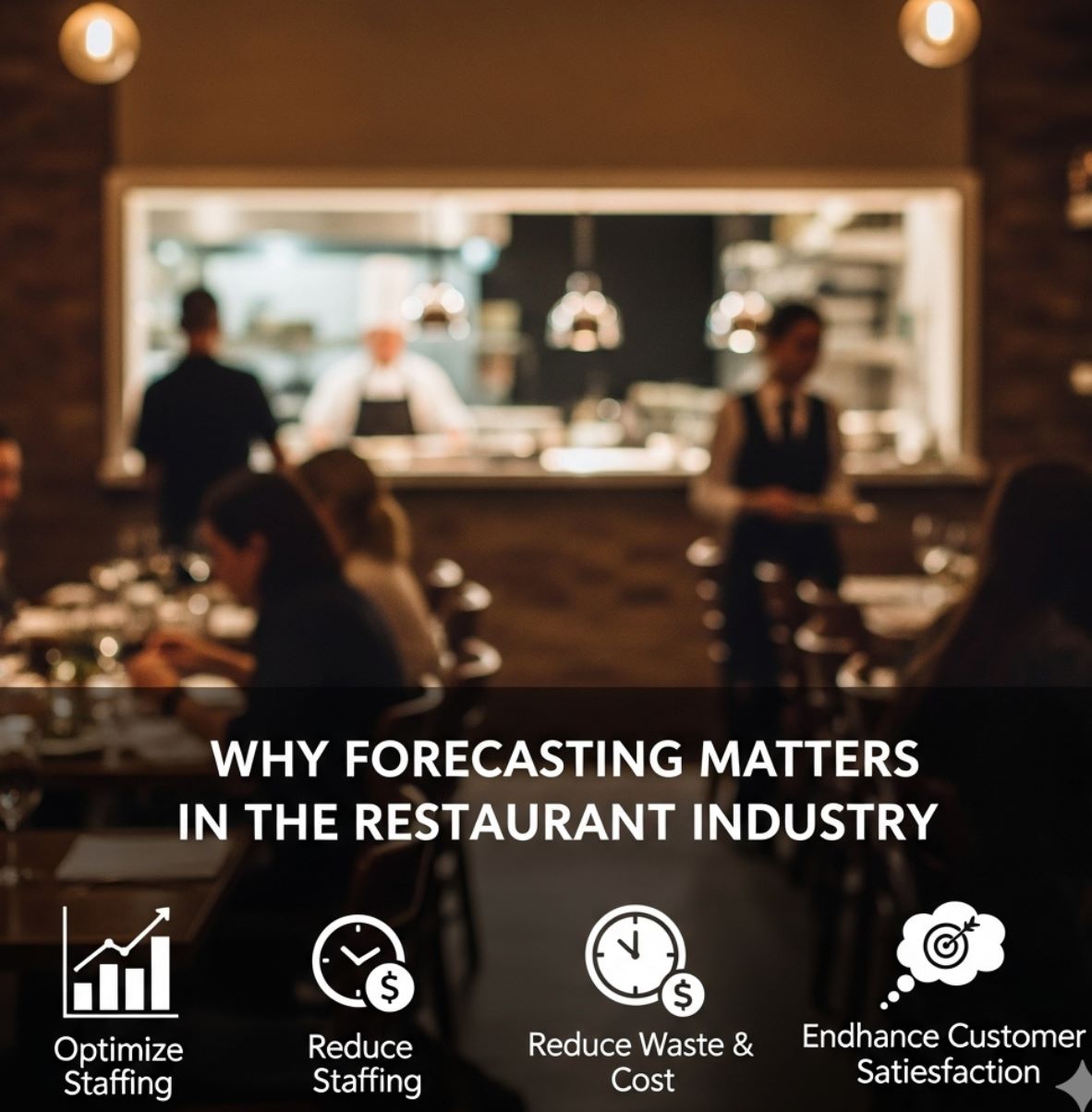
Rapid Growth of AI in Foodservice
The market for AI in food and beverage is booming. A 2025 industry report predicts the global AI market in food and beverages will grow by about $32.2 billion (2024–2029, 34.5% CAGR). AI-powered systems promise to "revolutionize restaurant management by enhancing efficiency, reducing costs, and improving customer satisfaction".
In other words, smart ordering directly saves money and resources, creating a win-win scenario for both profitability and environmental responsibility.
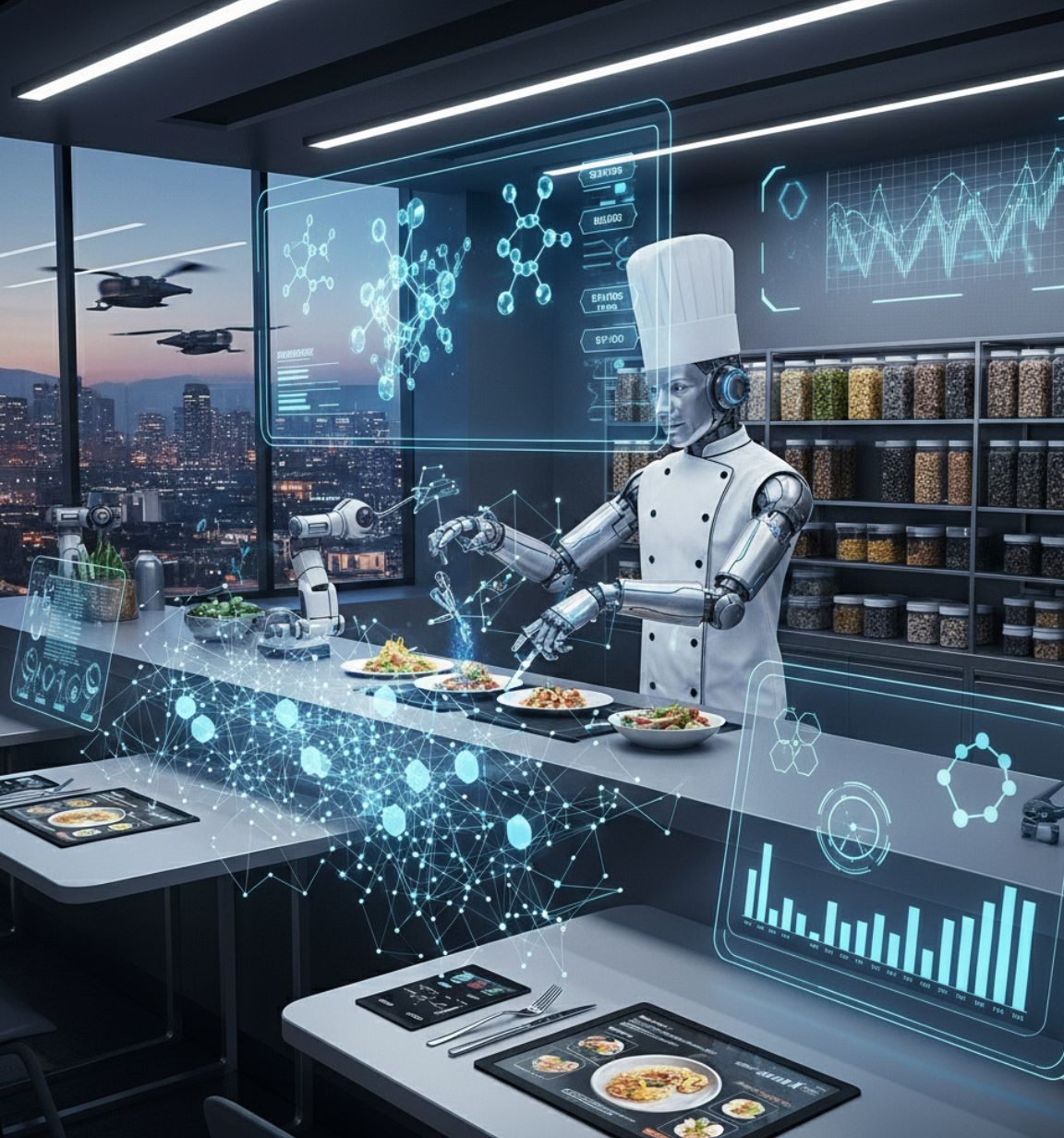
AI Demand Forecasting in Restaurants
AI demand forecasting uses machine learning to predict future sales and customer counts by analyzing data. Instead of simple spreadsheets, these systems ingest point-of-sale (POS) records, sales history, and even sensor inputs (like reservation or foot-traffic data) to anticipate trends.
Manual Forecasting
- Simple spreadsheets
- Intuition-based decisions
- Limited data sources
- High error rates
Machine Learning
- POS data integration
- Sensor input analysis
- Multiple data sources
- Predictive accuracy
In practice, restaurants use AI models to forecast seasonal demand, flag peak time slots, and allocate staff and inventory accordingly. For example, IBM notes that chains rely on AI to "predict seasonal demand and avoid overstocking perishable items". These forecasts can, for instance, ramp up prep for a holiday crowd and then scale back afterward, keeping inventory balanced.
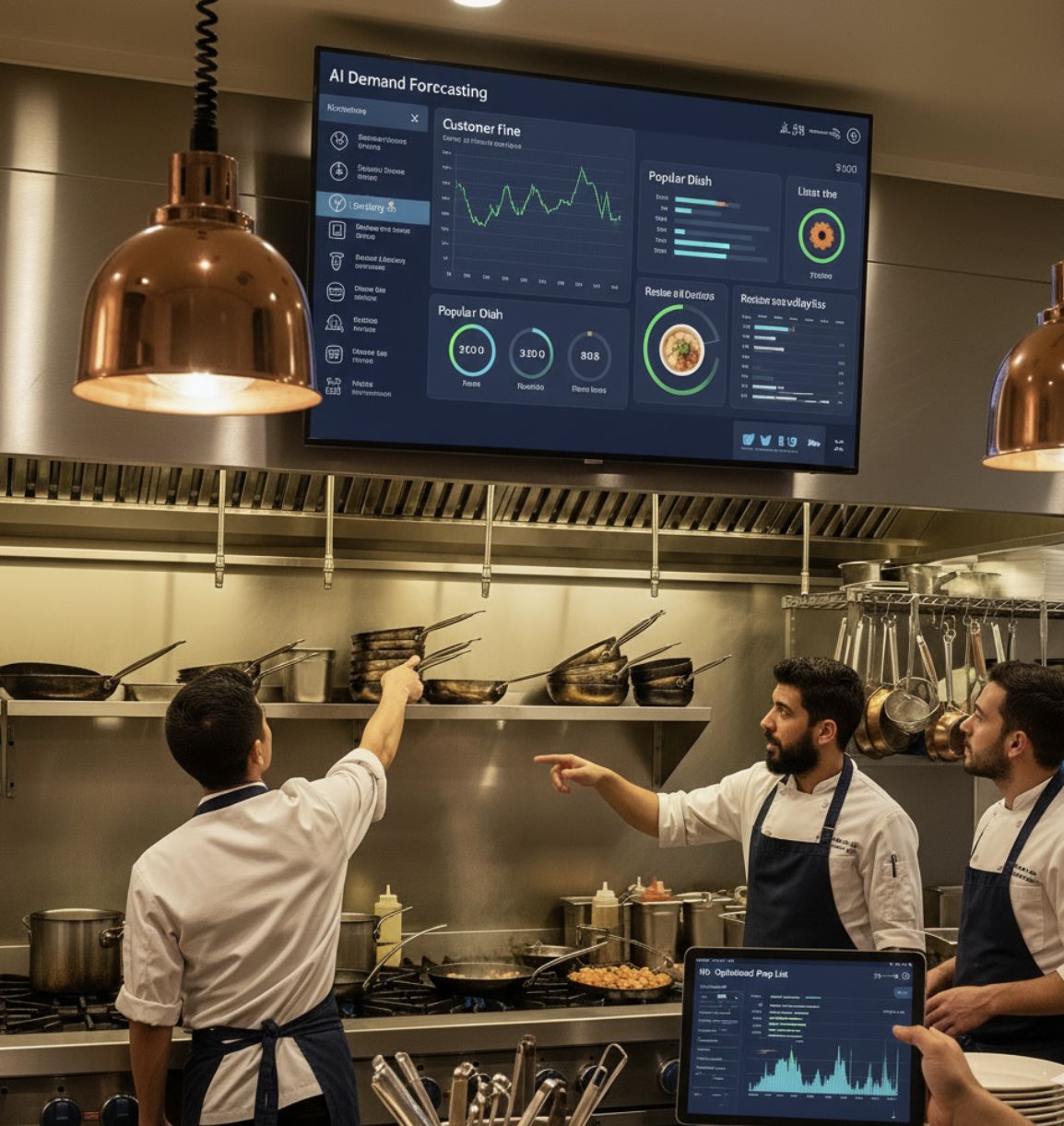
Data and Technology for AI Forecasting
Advanced AI forecasting draws on a wide variety of data. It combines basic sales history with external drivers like weather, special events, and promotions. As IBM explains, AI models can use data from IoT (Internet of Things) devices, economic indicators, weather forecasts, and social media sentiment to reveal demand patterns.
Internal Data Sources
- Historical sales: Year-over-year POS data by daypart, enabling baseline demand curves
- Inventory records: Stock levels and turnover rates for accurate planning
- Customer patterns: Reservation data and foot traffic analytics
External Factors
- Calendar factors: Day of week, holidays, and local event schedules (concerts, sports games, festivals) that affect foot traffic
- Weather conditions: Temperature and precipitation forecasts (rainy Tuesday evenings might boost soup orders)
- Promotions and trends: Special menu promos or viral food trends on social media
Machine Learning Techniques
- Neural networks for complex pattern recognition
- Gradient-boosting trees for ensemble learning
- Time-series models for temporal analysis
- XGBoost algorithms for high accuracy predictions
Over time, these models can adapt and improve continuously as more data becomes available, creating increasingly accurate predictions that drive better business decisions.

AI in Kitchen Automation
Modern restaurants are also using AI-powered automation in the kitchen. Some chains deploy robots or smart appliances to prep food consistently while chefs focus on cooking. Meanwhile, machine-learning algorithms analyze demand data to guide these systems.
Robotic Efficiency
Automated prep systems ensure consistent quality and speed
- Consistent portioning
- Reduced labor costs
- 24/7 operation capability
Smart Insights
Data-driven decisions guide kitchen operations
- Predictive ingredient prep
- Demand-based scheduling
- Waste reduction algorithms
An AI might learn that "rainy Tuesday evenings consistently drive higher soup sales", so the kitchen thaws extra broth and chops more vegetables in advance.
— AI Kitchen Operations Example
By merging robotic efficiency with data-driven insights, restaurants can ensure they have exactly the right ingredients ready when customers arrive, creating seamless operations from prediction to plate.
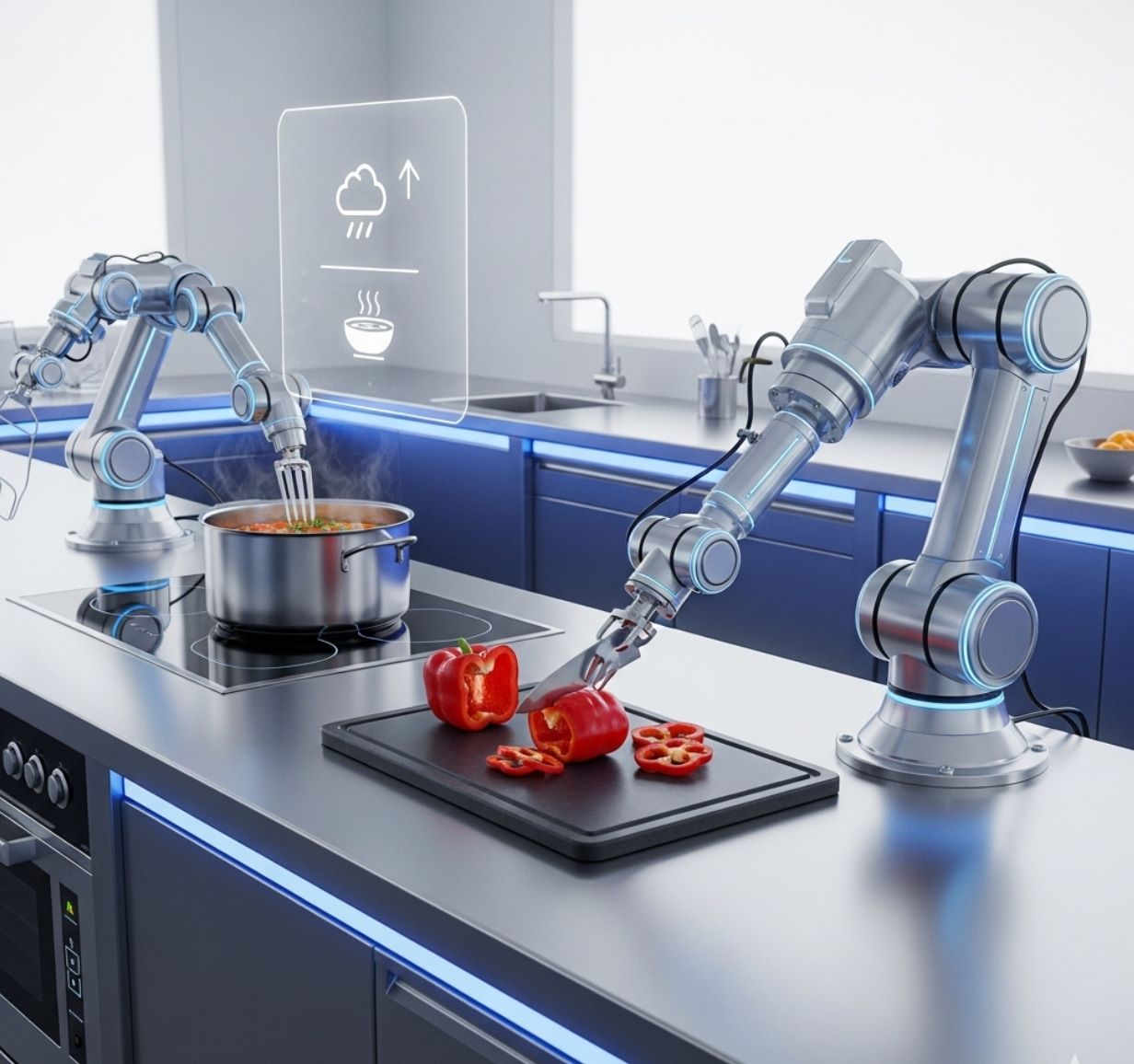
Benefits of AI Forecasting
Using AI to predict customer volume offers multiple payoffs:
Reduced Food Waste
Lower Costs
Improved Freshness
Operational Efficiency
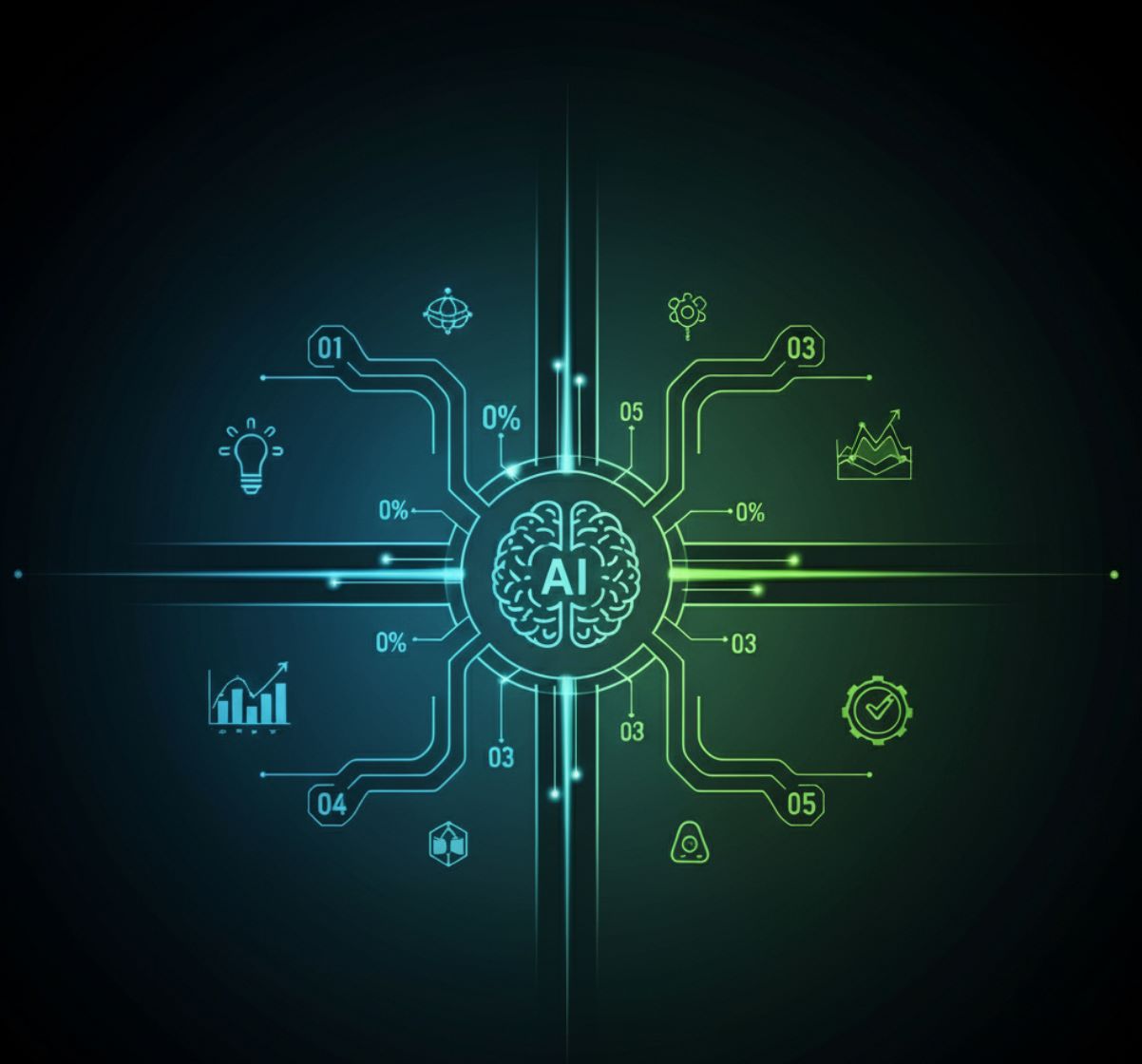
Real-World Examples
Many restaurants and tech firms are already leveraging AI forecasting:
Fast-Casual Chain Success
A major U.S. restaurant group replaced its legacy forecast tools with an AI/ML system and achieved remarkable results:
AI Waste-Tracking Solutions
Solutions like Winnow Vision use cameras and AI to identify food scraps. In trials, a kitchen using Winnow cut its food waste by about 30% within a few months.
Competitors Leanpath and Kitro use similar sensors to monitor waste and guide portioning decisions.
AI-Driven Menu Boards
McDonald's has rolled out AI-powered digital menu boards in 700 U.S. restaurants. These systems suggest items based on factors like weather and time of day, aligning menu offerings with predicted demand peaks.
- Weather-based recommendations
- Time-sensitive menu optimization
- Real-time demand alignment
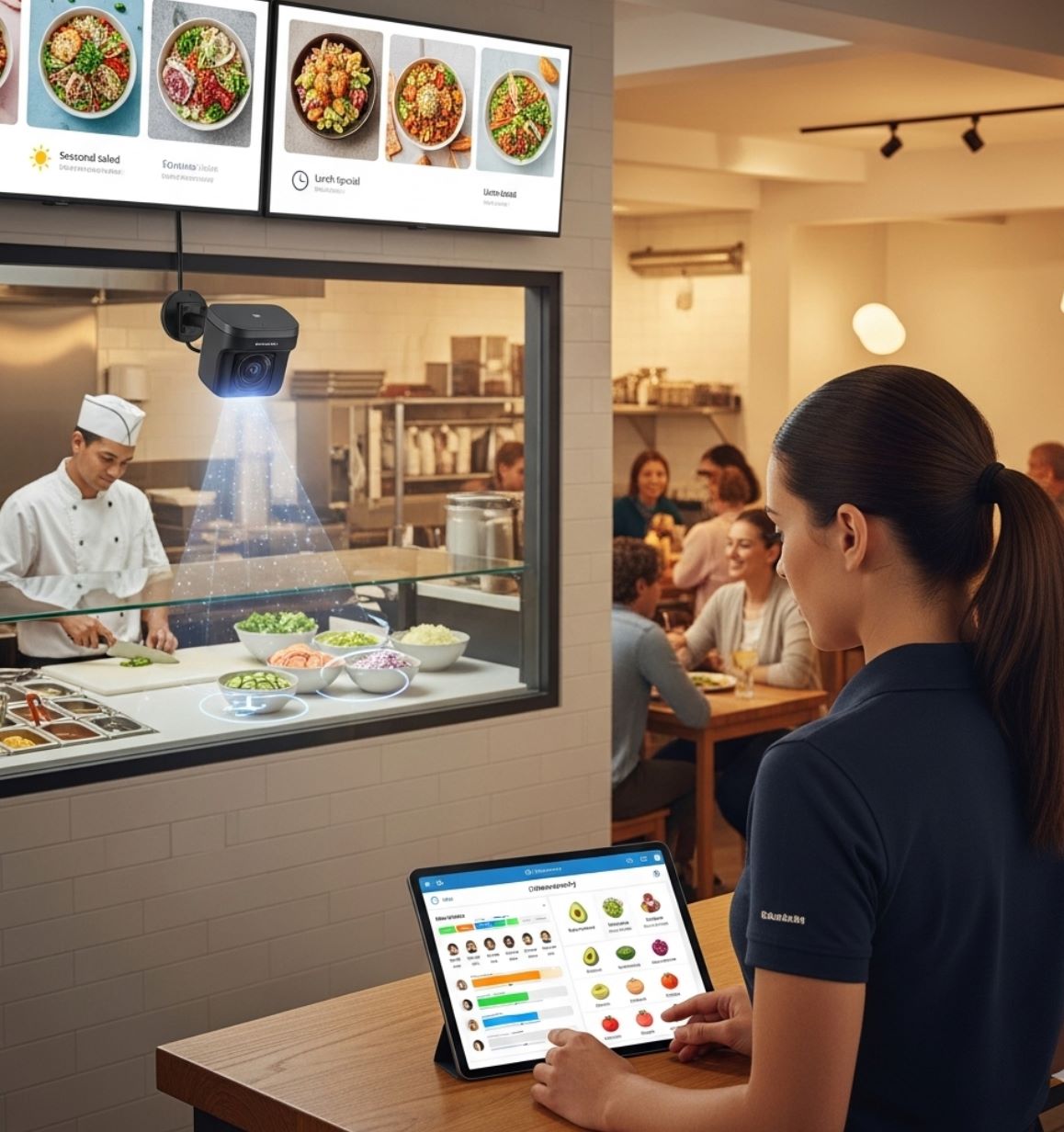
Implementing AI Forecasting
To get started, restaurants should follow a structured approach. For example, IBM recommends steps like:
Assess Objectives
Define what needs forecasting (e.g. overall covers, specific menu items, peak hours). Establish clear goals and success metrics for your AI implementation.
Choose Tools or Partners
Select AI software or consultants that specialize in hospitality demand planning. Research vendors with proven track records in restaurant forecasting.
Collect Quality Data
Ensure clean, accurate POS and inventory records. Integrate new feeds (weather APIs, local event calendars, etc.) as needed for comprehensive analysis.
Involve Stakeholders
Train staff on how forecasts inform ordering, staffing, and prep decisions. Gain buy-in by showing AI's value through clear demonstrations and results.
Monitor and Refine
Continuously evaluate forecast accuracy and update models over time as new data comes in. Regular optimization ensures sustained performance improvements.

Challenges and Future Outlook
Adopting AI forecasting also presents challenges. Smaller restaurants may lack the budget, data infrastructure, or technical expertise to deploy sophisticated tools immediately. Integrating disparate systems (POS, kitchen inventory, supplier catalogs) can be complex.
Current Challenges
- Budget constraints for smaller restaurants
- Complex system integration requirements
- Data quality and completeness issues
- Technical expertise requirements
Future Solutions
- More affordable cloud-based platforms
- Turnkey AI solutions for independents
- Improved IoT sensor integration
- Enhanced predictive analytics
Data quality issues (incomplete sales records or changing menus) can hamper accuracy. However, as cloud-based AI platforms become more affordable and turnkey, even independent cafes can leverage these tools.
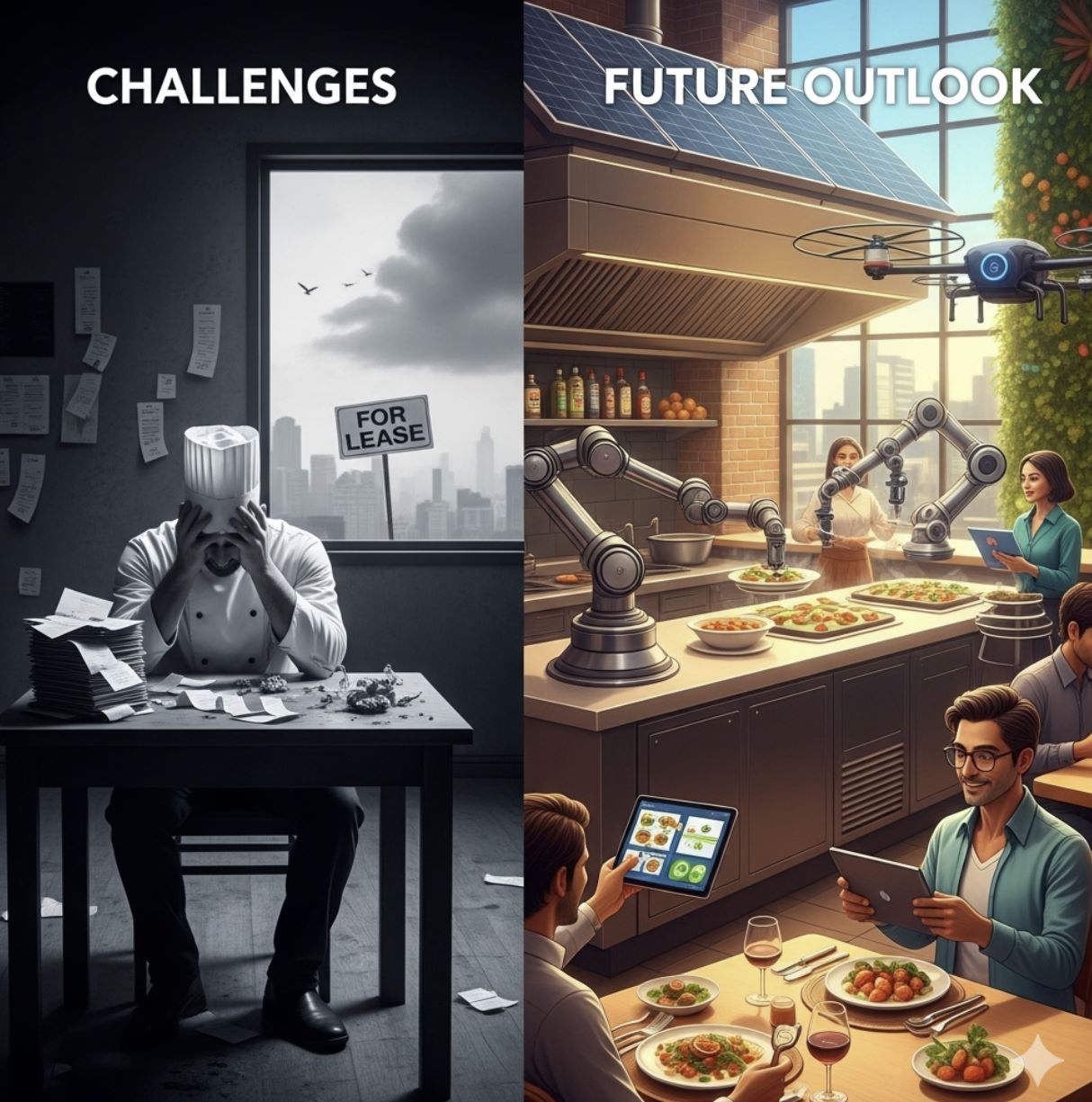
Conclusion
Accurate forecasting of customer volume is transforming restaurant operations. By using AI to anticipate demand, kitchens can optimize ingredient prep and inventory to meet real needs—saving money and reducing waste.
AI is set to "revolutionize restaurant management by enhancing efficiency". In a competitive industry, data-driven predictions become a recipe for success: ensuring the right ingredients are on hand for every customer and turning foresight into flavor.
— Industry Expert Analysis



